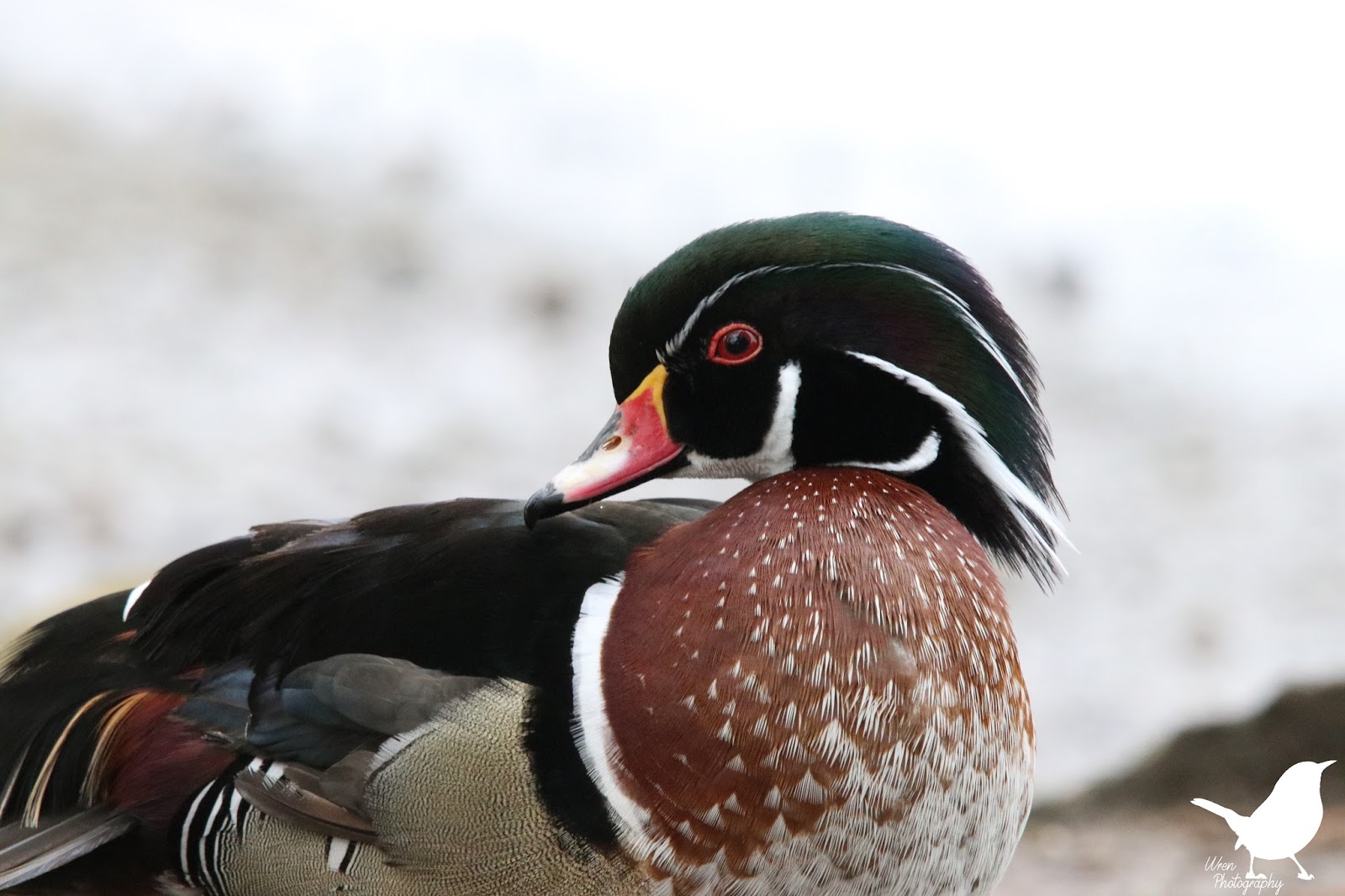Wood Duck
This post will be to ID the species of duck known as the Wood duck (Aix sponsa). They belong to the family Anatidae which is home to all geese, swans and ducks. Interestingly they are in the same genus as the Mandarin duck (Aix galericulata), this is very easy to see when trying to identify females of the two species as they are very similar at first glance. They are a species of perching duck allowing them to nest in trees away from most predators.
Size : 47-54 cm ( 19-21 inches) with a wingspan of 66-73 cm (26-29 inches).
Ecology : North America but various collections around the world.
Sexual dimorphism : yes, females lack the exquisite colouring of the drakes and are brown and white in colouration.
Habitat : Swamps, shallow lakes, marshes and ponds.
Conservation status : Least concern.
The wood duck is a permanent resident in the southern states of North America and although present in the North for summer these ducks will migrate down for the winter. In the late 19th century the Wood duck was nearly hunted to extinction for its meat and plumage for hats for the European market, however in 1918 the Migratory bird treaty was put into place and allowed slow recovery of this species. The Wood duck nests in cavities in trees which are close by to water. The females line the nest with feathers and similar soft materials and will typically have two broods in a single season. Roughly 7 to 15 white/tan eggs are lain. It is interesting to note some females will lay all their eggs into another wood duck females nest if they are nearby which is known as Nest dumping. Unlike most birds It only takes one day from hatching to when the chicks leave the nest, they do so by jumping out of the tree but luckily usually land in the water nearby and are capable of caring for themselves!
These ducks photographed here were located in Northern Ireland at Castle Espie Wetland and Wildlife Trust. They breed rare and common duck species from all over the world with the hopes of introducing the offspring into the wild when conditions are safe.
 |
| Wood duck drake. |
 |
| The female Wood duck. Although very similar to female Mandarin ducks the wood duck has a yellow ring around the eye and a patch of white surrounding it (Mandarin females have a stripe of white). |
Size : 47-54 cm ( 19-21 inches) with a wingspan of 66-73 cm (26-29 inches).
Ecology : North America but various collections around the world.
Sexual dimorphism : yes, females lack the exquisite colouring of the drakes and are brown and white in colouration.
Habitat : Swamps, shallow lakes, marshes and ponds.
Conservation status : Least concern.
The wood duck is a permanent resident in the southern states of North America and although present in the North for summer these ducks will migrate down for the winter. In the late 19th century the Wood duck was nearly hunted to extinction for its meat and plumage for hats for the European market, however in 1918 the Migratory bird treaty was put into place and allowed slow recovery of this species. The Wood duck nests in cavities in trees which are close by to water. The females line the nest with feathers and similar soft materials and will typically have two broods in a single season. Roughly 7 to 15 white/tan eggs are lain. It is interesting to note some females will lay all their eggs into another wood duck females nest if they are nearby which is known as Nest dumping. Unlike most birds It only takes one day from hatching to when the chicks leave the nest, they do so by jumping out of the tree but luckily usually land in the water nearby and are capable of caring for themselves!
These ducks photographed here were located in Northern Ireland at Castle Espie Wetland and Wildlife Trust. They breed rare and common duck species from all over the world with the hopes of introducing the offspring into the wild when conditions are safe.





This comment has been removed by the author.
ReplyDeleteThis comment has been removed by the author.
DeleteI didn't know there were perching ducks?! Amazing variety!
ReplyDelete